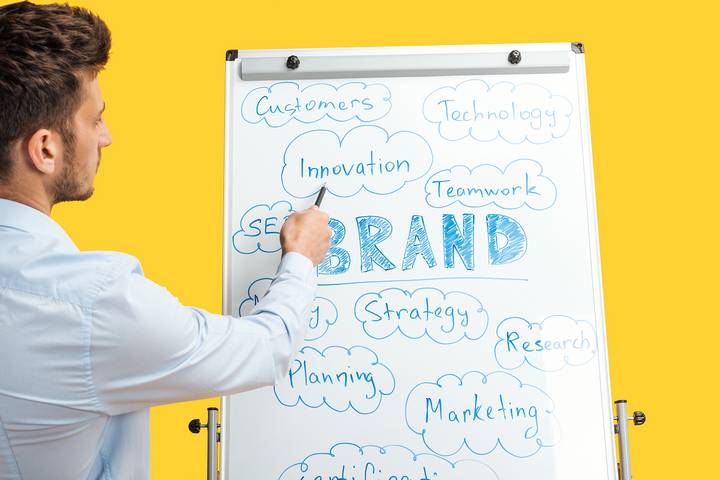Communication is an essential requirement in an organization, used by employees and their employers to share ideas and express one’s opinions with each other. With a diversified set-up, the workplace hosts different types of communication which harmonize togetherness.
The type of communication an organization chooses significantly impacts its general performance. Fortunately, there are several forms you can choose from in case your preferred one doesn’t perform as expected. You can also use the types of communication mentioned above alongside each other for more effective results. Essentially, respect remains a vital requirement for effective communication.
There are several types of communication in a workplace required for more effective performance. Here are the five different types of communication in the workplace:
Type #1: Verbal Communication in the Workplace

Verbal communication is the most common way of conversing and sharing ideas and opinions in a workplace, entailing the conveying of information by word of mouth or speech. This mode of communication is mostly used during one-on-one meetings, general conversations amongst colleagues, and when explaining complex terms to a client, the boss, or a colleague.
Verbal communication is quite easy compared to the other forms; after several exercises and practices, you should be perfect with verbal communication with or without any training. Below are several tips for achieving effective verbal communication;
- Think before making your speech.
- Understand your audience.
- Be cautious of your tone.
- Your body language matters.
- Listen more than you speak.
- Incorporate unmatched confidence in your speech.
- Practice your skills before utilizing them on an audience.
- Request and provide feedback to your audience.
Type #2: Technology Communication in the Workplace

With advancing technology, plenty of employee communication software has been designed to help workplaces. The software can improve communication and impact. Some popular forms of communication software include instant messaging, email, web and video conferencing, and video messaging.
Each communication form contributes significantly to effective workplace communication in a significant way. For instance, email communication is the most common and popular form, enabling employers to communicate simultaneously with many people.
Web conferences, on the other side, have been commonly used in business meetings or training sessions. It has an affordable monthly fee. It offers the users standard features of an actual meeting, such as screen sharing and whiteboard, and the ability to record meeting proceedings for later use.
Lastly, video chat is a more cost-effective form of conveying a particular message to a bunch of people with a more personal touch effect than other communication software.
Type #3: Written Communication in the Workplace

One of the most common types of communication in the workplace is written communication which involves expressing or conveying messages in the form of emails, notes, and memos. Although not as effective as verbal communication, written communication is suitable for conveying complex information as the message can be crafted and simplified.
However, most organizations embrace this type of communication, but it is also affected by several issues, such as misinterpretation and misunderstanding of the information. Most people usually conclude the message before reading the whole text, creating room for pre-judgment and other related issues.
Most of the time, written communication may require short-term training before approaching an audience. A trial message before the actual information has always proven impactful in written communication.
Type #4: Non-Verbal Communication in the Workplace

Non-verbal communication involves conveying a particular message in body signs without verbal speech. Different forms of non-verbal communication include body language, such as facial expression and body position, eye contact, and physical behaviour, such as hands and general body movements.
Like any other type of communication, non-verbal communication is also prone to several issues that need to be improved in the highlighted ways below;
- Being mindful of your physical appearance and the background on which you present your message.
- Your facial expression matters; use those lips and smile in between the conversation.
- Eye contact proves how confident you are before an audience.
- Excess hand movements symbolize restlessness and a lack of confidence.
- Handshaking significantly contributes to the impact of non-verbal communication.
Type #5: Visual Communication in the Workplace

Visual communication entails using several visual elements to communicate information to people in your workplace. These elements include photographs, videos, drawings, infographics, charts, slide check presentations, and animated GIFs.
Visual communication is quite easy as it requires one to view the different elements and internalize them into useful information. The newest addition to types of communication is visual communication since it is suitable for a large number of people.
Good communication in the workplace creates a feeling of togetherness and satisfaction among the players at the workplace. It also builds trust between employees and their employers. Similarly, it helps build better and long-lasting relationships at work. From a managerial perspective, communication provides an easier channel for solving problems, significantly contributing to greater yields and performance.
Good communication boosts the power of engagement and participation among the employees. The impact of team building can be achieved much easier and faster. Communication also enhances the cases of innovation and creativity within the workplace. Finally, it enhances accountability while bringing clarity to work.




